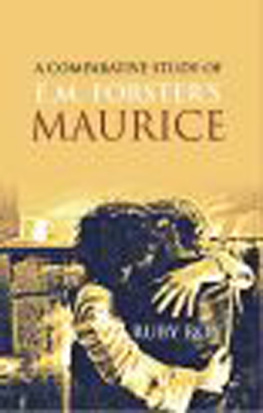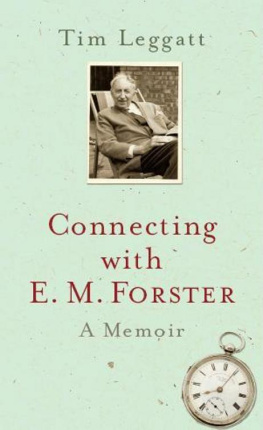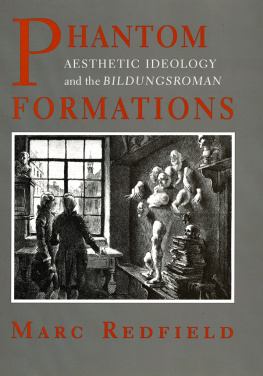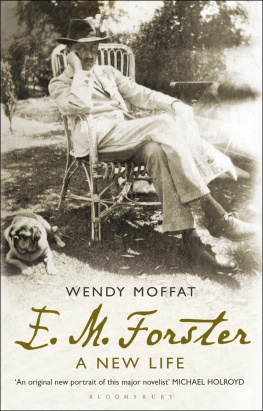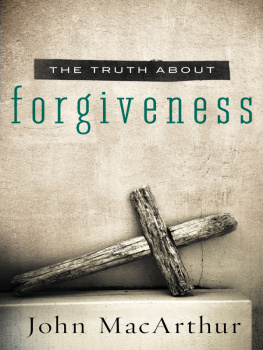
A Comparative Study of E.M. Forsters MAURICE
A Comparative Study of E.M. Forsters MAURICE
Ruby Roy

Author
All rights reserved. No part of this book may be reproduced, stored, adapted, or transmitted in any form or by any means, electronic, mechanical, photocopying, micro-filming recording or otherwise, or translated in any language, without the prior written permission of the copyright owner and the publisher. The book is sold subject to the condition that it shall not, by way of trade or otherwise, be lent, resold, hired out, or otherwise circulated without the prior publishers written consent in any form of binding or cover other than that in which it is published.
The views and opinions expressed in this book are author(s) own and the facts reported by them have been verified to the extent possible, and the publishers are not in any way liable for the same.
ISBN : 978-93-8022-256-1
First Published, 2015
Published by :
 | Gennext Publications
23, Main Ansari Road,
Dariyaganj, New Delhi-110002
Ph. : 23282060, 23261060
E-mail: |
Laser Typesetting : Shubham Printers, Delhi
Printed at : G. Print Process, Delhi
Cataloging in Publication DataDK
Courtesy: D.K. Agencies (P) Ltd. <>
Roy, Ruby, author.
A comparative study of E.M. Forsters Maurice / Ruby Roy.
pages cm
Includes bibliographical references (pages ).
ISBN 9789380222561
1. Forster, E. M. (Edward Morgan), 1879-1970. Maurice. I. Title. II. Title: Maurice.
DDC 823.912 23
Contents
Acknowledgements
This book is a modest attempt on my part to highlight critical aspects of E.M. Forsters novel Maurice in relation with his other novels.
I would like to express my gratitude to the Principal Sir Dr Satendra Kumar Joshi of Satyawati College (Evening) for his constant encouragement and support.
My heart felt thanks to my Ph.d. supervisor Dr Manjari Agarwal and my mentor Dr R.K. Agarwal, Professor and Ex-Head, Department of English (Dr B.R. Ambedkar University, Agra) for their valuable guidance.
Last but not the least, I must mention that my father Shalil Roy, my mother Anima Roy and my brother Shomor Roy, who have encouraged me to write this book and have stood as the greatest source of inspiration in my honest and sincene endeavour the exercise.
RUBY ROY
Introduction
E.M. Forster developed and conceived the idea of his novel Maurice between 1913 and 1914. However it was not published during Forsters lifetime when it appeared in 1917, a good deal of literary controversy ensued. The problematic aspect about this novel originated with E.M. Forster being confused about this particular piece of work. According to an Introduction by P.N. Furbank, the novel was revised in 1919, and 1932, in once more, fairly drastically, in 1959-1960 Forster created another mystery by scrawling publishable-but worth it on the cover of the neatly prepared 1960 manuscript, and most reviewers have since tried to sort out this question by author.
The publication of this novel invited a lot of literary and non-literary criticism. First of all, one must not forget the fact of the novels suppression during the authors lifetime. The novel is primarily concerned with illustrating Forsters point of view about homosexuality being normal leading to happily ever after conclusion of gay relationshp. In 1914, this idea was unacceptable, except perhaps in very sophisticated circles. Philip Toynbee encapsulates the situation succinctly when he commented about the novel:
The Wilde case was still reverberating
and English homosexuals were living in
greater fear, shame and distress than
they had done even in the middle of
the nineteenth century.
The lightest sentence for the alternate sexual orientation was still ten years in prison. According to Forsters biographers, he was very close to his Victorian ancestors, and his middle-class relatives. If one considers his regard for tradition and his attachment to his famly, censure of his refusal to print becomes impossible. The benefit he may have done to the world in speeding change of laws and attitudes would have been negligible in his eyes, if it involved dire consequences for the Forster and Thornton.
By 1967, his mother and other relatives were dead; furthermore, the Wolfenden report revising sexual laws had been accepted, and he could, if he wished, have published the novel. According to Furbank
Friends actually suggested it, but he
firmly refused...Also, the book had
become rather remote to him. He said
he was less interested now in the
theme of salvation, the rescuer from
otherwhere; he thought it was a
fake.
This explanation does not seem satisfactory; if he felt so remote he could have destroyed the manuscript, instead of putting so much effort in preparing it so carefully for publication. As a reader, one can speculate that the eyes of the world, the conventionality that Forster denounces in each of his works, also affected his own view of the world. The bourgeois values associated with Sawston in Where Angels Fear to Tread and The Longest Journey are just as much a part of Forsters world-picture as the Cambridge ideals of eccentricity and freedom that these novels present. One can surmise that Forster could never resolve feelings about his strong little radical novel. The rest of his fiction also complement or comment on this posthumous publication. Keeping in mind, Forsters love for secrets and surprises, an interesting theory can be developed.
One senses, a sort of rebirth for Forster through the posthumous publication of a flawed, semi-autobiographical novel. The theme of immortality is present in his major works of fiction. In the Longest Journey, Rickie and his deformed daughter both die, but their name and memory live on in the form of Stephen Wonhams child. In A Passage to India, Moore live on through her children, and in the memory of those she befriended in India. In Where Angels Fear to Tread, much of the plot involves Ginos desire for a son, and the future of that child. In Howards End, the house preserve both the life of England, and the memory of Wilcox. In any case, if Forster considered his own life as a story, Maurice provides it with an excellent conclusion.
Chapter 1
Art and Artist
Maurice as a novel invites many complex interpretations. The shadow of the novelist intrudes upon our analysis at every turn. E.M. Forster, being of public person complicates matters more as the text itself contains brief autobiographical note, which we cannot easily dismiss. The current trend of studying Forsters personal philosophy misleads any thorough examination of his texts. It becomes convenient to forget the original novel, and see only the author who wrote it. Any authors biography can work as an indicator towards hidden facets of a novel but at the same time it can also distort the text. It is dangerous to draw too many parellels between the writers experiences and those of characters, the novel would be reduced to what Forster himself once described as a pathological tract. It is a sorry fact that most embarrssing details of Forsters life came to surface after his death. Alfred Borrello comments:
Almost from the moment of his death,
Next page
